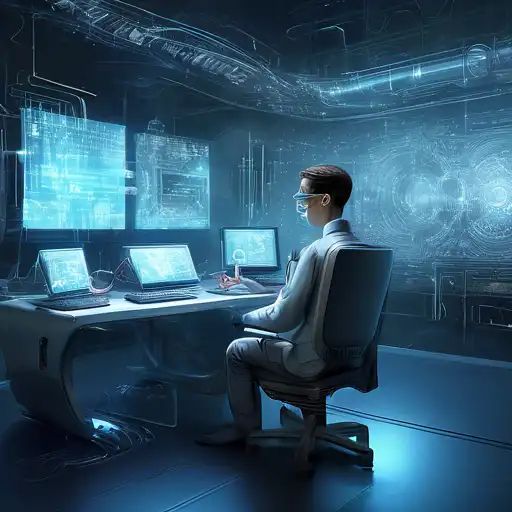Introduction to Computer Vision Technology
Computer vision technology has seen remarkable advancements in recent years, transforming how machines interpret and understand the visual world. From facial recognition systems to autonomous vehicles, the applications of computer vision are vast and varied. This article delves into the latest breakthroughs in the field, highlighting how these innovations are shaping the future of technology.
Key Advancements in Computer Vision
The field of computer vision has evolved significantly, thanks to advancements in artificial intelligence (AI) and machine learning (ML). Here are some of the most notable developments:
- Deep Learning Models: The introduction of deep learning has revolutionized computer vision, enabling more accurate and efficient image recognition and processing.
- Real-time Processing: With the advent of more powerful processors, computer vision systems can now process and analyze images in real-time, opening up new possibilities for instant decision-making.
- 3D Image Recognition: Advances in 3D imaging technology have improved the depth perception of computer vision systems, enhancing their ability to understand spatial relationships.
- Edge Computing: By processing data locally on devices, edge computing has reduced the reliance on cloud-based systems, making computer vision applications faster and more secure.
Applications of Advanced Computer Vision
The advancements in computer vision technology have led to its widespread adoption across various industries. Some of the key applications include:
- Healthcare: Computer vision is being used for diagnostic purposes, such as analyzing X-rays and MRI scans, to detect diseases at an early stage.
- Retail: Retailers are leveraging computer vision for inventory management, customer tracking, and personalized shopping experiences.
- Automotive: Autonomous vehicles rely heavily on computer vision for navigation, obstacle detection, and traffic sign recognition.
- Security: Facial recognition and surveillance systems use computer vision to enhance security measures in public spaces and private properties.
Challenges and Future Directions
Despite the significant progress, computer vision technology still faces several challenges, including privacy concerns, data bias, and the need for large datasets. However, ongoing research and development are addressing these issues, paving the way for more ethical and efficient computer vision systems. The future of computer vision looks promising, with potential breakthroughs in areas like augmented reality (AR) and virtual reality (VR) on the horizon.
For those interested in diving deeper into the world of AI and machine learning, exploring our comprehensive guide can provide valuable insights into how these technologies are driving innovation across various sectors.
Conclusion
The advancements in computer vision technology are not just enhancing the capabilities of machines but are also creating new opportunities for innovation across industries. As we continue to push the boundaries of what's possible, the potential applications of computer vision are only limited by our imagination. The future is bright, and computer vision is at the forefront of this technological revolution.
